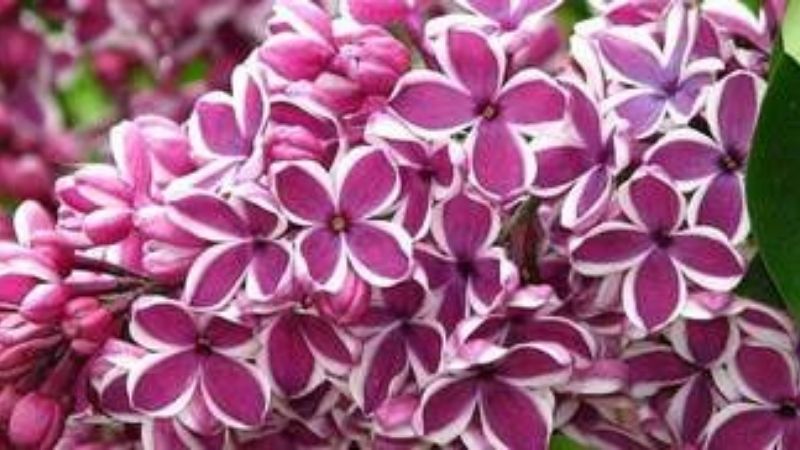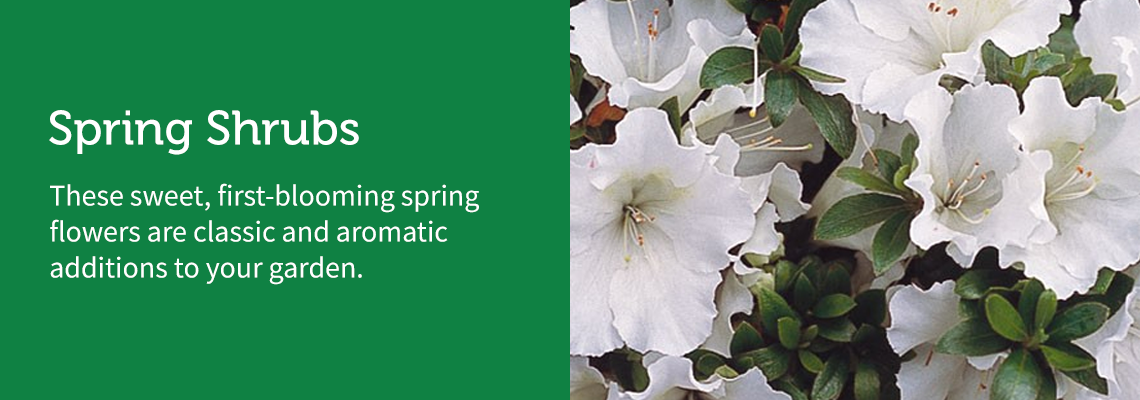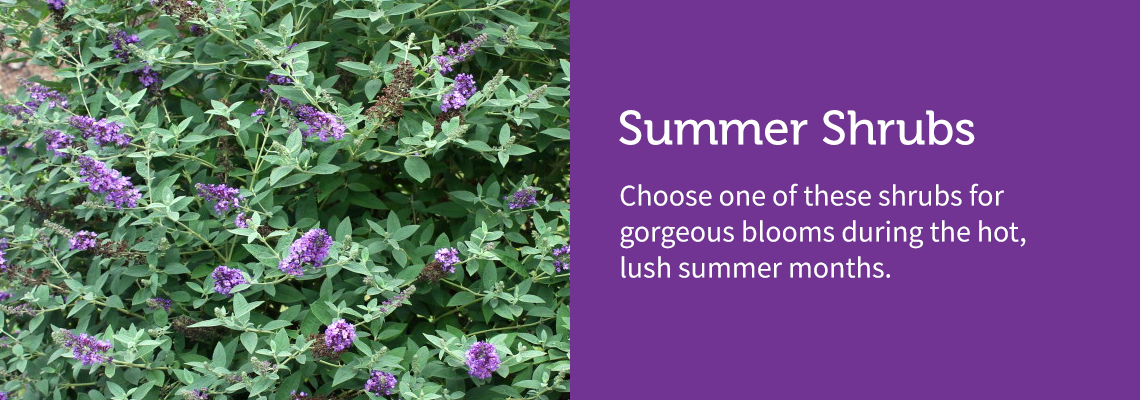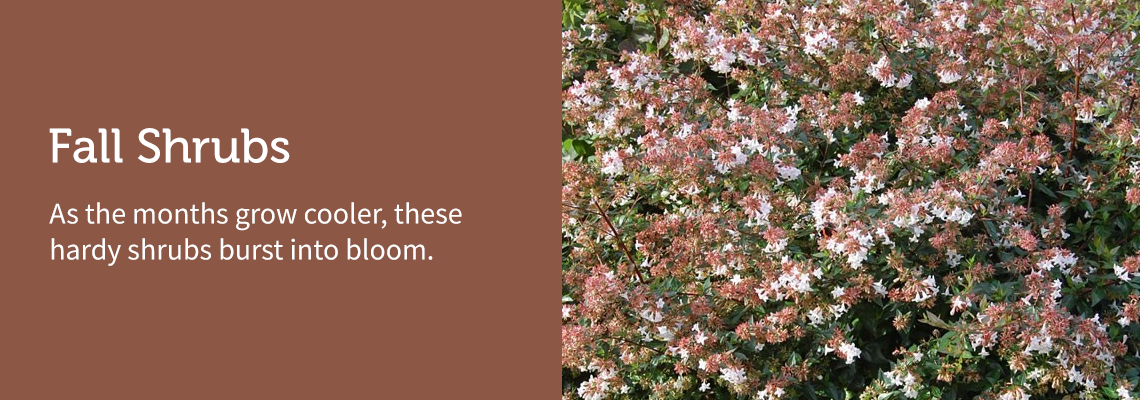
Tips for Choosing Fragrant Shrubs
We all remember that one garden, the one that filled the air with perfume before you even turned the corner. You didn't have to see any flowers to know they were around — delicate scents of jasmine and azaleas filled every breeze.
You don't have to cycle through dozens of high-maintenance annuals to build a fragrant garden. Flowering shrubs offer a low-maintenance alternative and can provide season-long beauty without season-long work. Keep reading to get Woodie's choice for reliable and beautiful fragrant shrubs to keep your garden smelling like spring all year long.
Why Plant Flowering Shrubs?
Shrubs tend to get less attention than showier, fussy annuals. But shrubs deserve more notice. Defined as a woody, rounded plant with several main stems growing from ground level, a shrub provides steady foliage and reliable flowering patterns and can live up to 10 years.
Beyond longevity, shrubs offer many more benefits:
- Layers of color: Flowering shrubs often have multiple seasons of blooming, which creates waves of seasonal color and adds interest to your garden.
- Privacy and windbreaks: When planted in groups or hedges, shrubs act as a screen for your property, increasing privacy and deflecting damaging winds.
- Focal points: Shrubs shine when planted in groups or as stand-alone specimens. Large enough to command attention, a single flowering shrub will be the star of your garden.
- Low-maintenance: Typically, shrubs require little attention once established aside from the occasional pruning of spent flowers. Providing years of beauty with little upkeep, shrubs are perfect for both beginner gardeners and experienced green-thumbs.
- Long-lasting fragrance: Because they last longer than flowering annuals, fragrant shrubs provide season-long blossoms and aromas.
Shrubs are winning additions to any garden and will drench your yard with beautiful scents all year long.
Before You Start Planting
Before you decide on a shrub, make sure you know what plants will thrive in your garden. Here are some factors to consider before you pull out the shovel.
- What is your soil type? Do a quick soil test to determine the pH level of your soil. There are many different types of tests, from digital meters to disposable kits.
- How much sun does your garden get? Check on your garden throughout the day to see how much sun hits it directly. You'll often be surprised — a garden bed that you thought received six hours of direct sun might just get four hours of dappled light.
- What is your planting zone? A planting zone, or hardiness zone, is a method of dividing the country based on weather patterns. Choosing a plant that thrives in your hardiness zone is essential for a successful garden.
The Most Popular Fragrant Shrubs
You could spend hours combing through the shrub section of a nursery. Below, we've grouped some of the most successful plants by season, so you can easily find shrubs to give you color when you need it.

Spring Shrubs
These sweet, first-blooming spring flowers are classic and aromatic additions to your garden.
Azalea
With gentle flowers ranging from brilliant white to deep fuchsia, azaleas are a classic spring staple. Many begin blooming in early to mid-season, and the flowers linger until early summer. Azaleas thrive in full sun to part shade and can work especially well, bordering paths or structures. Plant them in well-drained, slightly acidic soils for the best results.
Try a Pink and Sweet variety, which has vibrant pink flowers and a rich, spicy aroma. The dusty-green leaves bronze in the summer heat, and turn a purple-red in fall. Full sun brings out the richest autumn colors.
Another popular variant is the Gumpo Pink Azalea. This shrub bursts with spring color, and grows rose, trumpet-shaped flowers in dense clusters. Gumpo Pink are dwarf azaleas and won't grow more than 3 feet tall. They enjoy part shade or filtered sun and flourish in either mixed borders or containers.
For a repeat-bloomer, try an autumn-flowering variation such as Autumn Angel Encore Azalea.
Bridal Wreath Spirea
When blooming, the delicate white flowers of Bridal Wreath Spirea flow down long, arching stems in clusters. The densely-branched shrub blossoms in late spring, and prefers full sun and well-drained soil. The profusion of white flowers almost hides pretty, green-gold foliage during its flowering season.
Bridal Wreath Spirea thrives throughout most of the continental United States, in zones 4-8. A mature plant can reach up to 3 feet tall and 4 feet wide, meaning it can be placed either as a border plant or as a stand-alone feature and not overwhelm the rest of your garden. Honey-scented Bridal Wreath Spirea will fill your yard with gorgeous flowers and a sweet, springtime aroma.
Viburnum burkwoodii
This semi-evergreen shrub produces globes of small white flowers with a blush of pink. Viburnum burkwoodii begins blooming in mid-spring, but its spicy-sweet fragrance peaks in May. In autumn, its dark foliage turns deep maroon.
For best results, plant Viburnum burkwoodii in well-draining soil and full to partial sun. It attracts wildlife with its black autumn berries, especially birds. Viburnum burkwoodii thrives in hardiness zones 5-8 and can grow to reach 6 or 7 feet tall. Because of its spring flowers and autumn foliage, Viburnum burkwoodii shines as either a focal point or stunning hedge.
Forsythia
The herald of spring, almond-scented Forsythia often bursts into bloom as the last winter snow melts away. No foliage distracts from the dramatic, vibrant yellow flowers lining its long stems. Forsythia is a very hardy shrub and can survive in zones 3-7 in full to partial sun.
After the plant is around three years old and well-established, prune Forsythia in late winter or early spring just before blooming. Annual pruning promotes increased branches and dense flowering. Try Spring Glory for a splash of spring color, or Lynwood Gold for a more vertical shrub perfect for hedges.

Summer Shrubs
Choose one of these shrubs for gorgeous blooms during the hot, lush summer months.
Butterfly Bush
The Butterfly Bush more than deserves its name.
With violet-blue flower spikes and silvery green foliage, the butterfly bush attracts throngs of pollinators such as butterflies and hummingbirds. The dense blossoms have a floral fragrance and keep blooming well into fall. This hardy shrub is tolerant of harsh conditions as well as deer resistant. Butterfly bushes thrive in zones 5-9 and do best in full sun.
Knockout Rose
Many gardeners keep well away from roses. The high-maintenance flowers have a persnickety reputation, and many are notoriously tricky to grow well. For a lovely rose bush that's delightfully low-upkeep, try planting a Knockout Rose.
These hardy flowers are reliable and disease resistant and offer months of steady flowering. The longest-blooming roses, Knockouts are known for giving a high return with easy care.
Try a Double Pink Knockout for nine months of fragrant pink flowers. Double Pink Knockouts are tough and unfazed by most summers, and they thrive in full sun and well-drained soil.
For tropical colors, try a Peachy Knock Out Rose. This Knockout grows up to 4 feet tall and thrives in zones 4-9. Plant a Peachy Knock Out in full sun for the best blooms and fragrance.
Itea Little Henry
A North American native shrub, Itea Little Henry produces spears of white, aromatic flowers during the summer. Itea grows in full sun to partial shade and does best in moist, well-drained, slightly acidic soil. It grows well all across the country, in zones 5-9.
Keep your Itea well watered, especially if you live in warmer climates. Because it is a native shrub, Itea is pollinator-friendly and attracts butterflies and other beneficial insects throughout the blooming season. Once established, Itea requires little maintenance, which makes it ideal for hard-to-reach borders.
Frostproof Gardenia
The fragrance of Gardenias has captivated perfumers for centuries. Strong and intoxicating, the distinct aroma of Gardenias quickly fills a garden. The seashell-shaped buds unfurl into gorgeous, soft flowers during the summer, and are contrasted by a glossy, deep green foliage.
Gardenias flourish in partial to full sun and slightly acidic soil in zones 6-10. Resistant to spring frosts, Gardenias can grow up to 5 feet tall, which makes them well-suited for striking hedges or as statement plants.

Fall Shrubs
As the months grow cooler, these hardy shrubs burst into bloom. Choose one of these autumn-flowering shrubs to build a garden with year-round appeal.
Blue Angel Rose of Sharon
With blue, hibiscus-like flowers, a Blue Angel Rose of Sharon begins blooming in late summer and continues well into autumn. The Rose of Sharon is a hardy shrub and tolerates a wide range of soil types and degrees of moisture.
Blue Angel Rose of Sharon does best in zones 5-8 and can grow up to 8 feet tall. These shrubs prefer full sun, so plant either in sunny, striking hedges or against structures. Rose of Sharon is especially suited for framing entryways.
Little Richard Abelia
As with the the Rose of Sharon, Little Richard Abelia begins flowering in summer, but blossoms last up to nine months until the first frosts. This compact shrub is evergreen in warm climates, with delicate white flowers and red new growth. The blossoms have a sweet, citrus-like aroma, which makes them ideal accents near living areas such as patios, porches or walkways.
This low-maintenance shrub prefers well-drained soil and full sun and thrives in zones 6-9. Abelias only grow until about 3 feet tall, so they do better as borders than hedges.
Munchkin Oakleaf Hydrangea
Although many people associate hydrangeas with spring and summer displays, the Oakleaf cultivar brings the hydrangea's whimsical flower clusters to autumn. The more subdued, antique-looking blossoms are a stunning addition to a fall garden.
Surprisingly tough, the Oakleaf Hydrangea can easily withstand heavy autumn rains and harsh weather. This autumn hydrangea does best in partial shade. In addition to fall flowers, its dark green leaves turn a red-bronze as the months grow colder. This shrub grows up to 4 feet tall and does best in zones 5-9.
Caryopteris
Caryopteris is a mounding, compact shrub with tube-shaped, purple-blue flowers. Its long blooming season begins in late summer and lasts until frost. Attractive to pollinators, Caryopteris draws delicate butterflies and hummingbirds to your garden throughout autumn. It does best in zones 5-9.
Caryopteris prefers full sun and dry, average to sandy soils. Only reaching 2.5 feet tall, Caryopteris fits well in front of homes or along walkways. Caryopteris is a deer-resistant shrub and has few pests, making this a truly low-maintenance addition to your autumn garden. Try Dark Knight or Beyond Midnight variants for a pop of blue color against red fall hues.
Winter Shrubs
In winter, most gardens look empty and sad. Filled with the dry husks of summer growth, they lack color or personality. Avoid a drab winter yard with these stunning, winter-blooming shrubs.
Mahonia
Mahonia is a glowing addition to any winter garden. The spiny, evergreen leaves are topped by vertical spikes of pale yellow-green flowers during the winter months. The flowers turn into dark blue-berries in the spring, attracting birds and other wildlife to your garden.
Mahonia thrives in zones 7-9 and will grow until it's 3 feet tall. They do best in partial sun to shade environments and well-drained soil. Mahonia add texture to any garden bed, and these dramatic and statuesque plants do well in containers and as background accents. Try the Mahonia Winter Sun for a classic variant, or the Mahonia Soft Caress for a thornless version.
Hamamelis Vernalis
Also called the Ozark Witch Hazel, this shrub begins blooming in late autumn and lingers through winter. Witch Hazel does best in partial shade and medium-wet, slightly acidic soils.
The fringe-like yellow flowers have a burgundy center, and they carry scents of citrus and spice. These plants flourish in zones 4-8 and are an attractive nesting site for many birds. Make sure you plant Witch Hazel in a location with enough space — it can grow up to 10 feet tall and 15 feet wide. The matte, blue-green leaves change to sunset-colors in the fall, making Witch Hazel is a striking addition to any garden.
Sweet Box (Sarcococca hookeriana)
Don't let the delicate white flowers fool you — Sweet Box produces a robust, jasmine-esque fragrance that packs a powerful punch. This deer-resistant shrub has a dwarf growth pattern and rarely grows over 2 feet tall, which makes it a perfect ground cover.
Sweet Box thrives in full to part shade, so plant it in dim areas to create a soft, woodland atmosphere. Besides sweet winter flowers, the evergreen foliage of Sweet Box will add structure and greenery to your winter garden. It grows best in zones 6-9.
Camellia White by the Gate
Camellia flowers provide an almost continuous display of large, white double blooms from late winter through spring. Long-beloved by gardeners, camellias have contrasting dark green foliage and thrive in hardiness zones 6-9. They can grow to be 8 to 10 feet tall, making them ideal for background borders or against structures.
Plant camellias in full sun to part shade in well-draining soil. Because they can be so tall, Camellias are especially striking in mixed borders, where they create a thick and stunning hedge.
Shop for Fragrant Shrubs Today
At Garden Goods Direct, we are dedicated to helping you find the perfect flowering shrub for your garden. Skip the hours of wandering around a nursery — shop our online selection of fragrant shrubs, and even buy multiples of your favorites.
When you shop through Garden Goods Direct, you can rest easy knowing that we have stamped every plant with our Quality Seal of Approval. We take plants, and your satisfaction, seriously — start growing your dream garden, and shop today!
